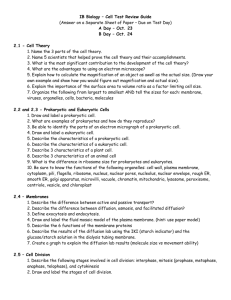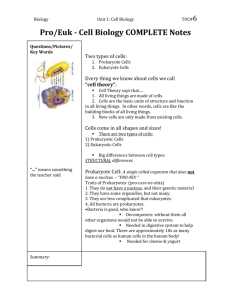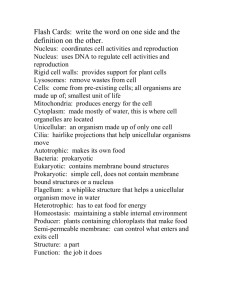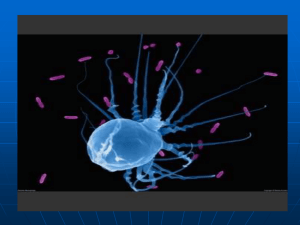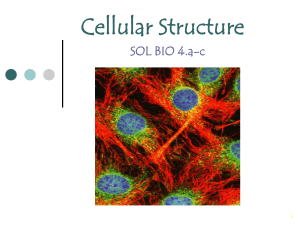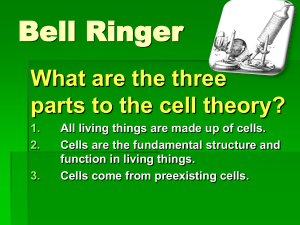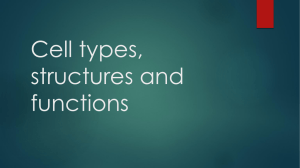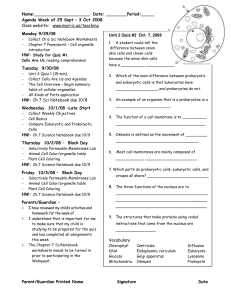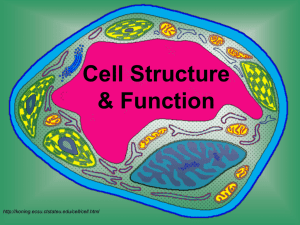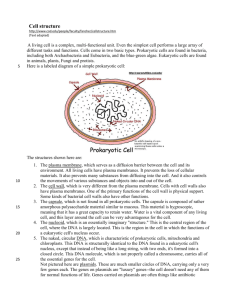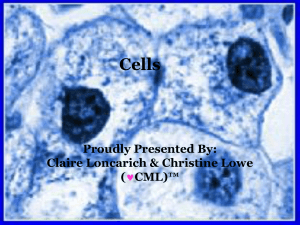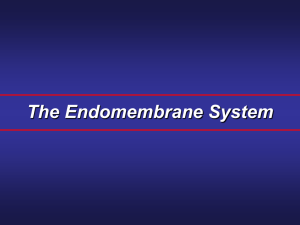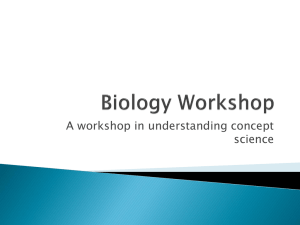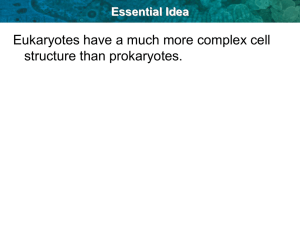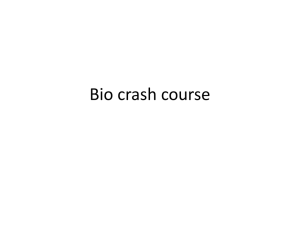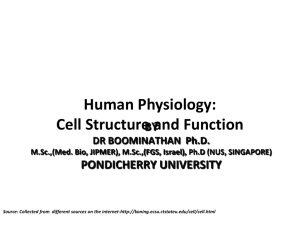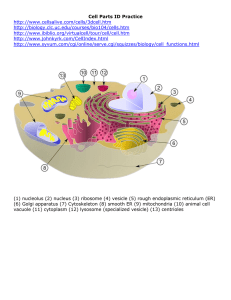Cell Structure PPT Part 1
advertisement
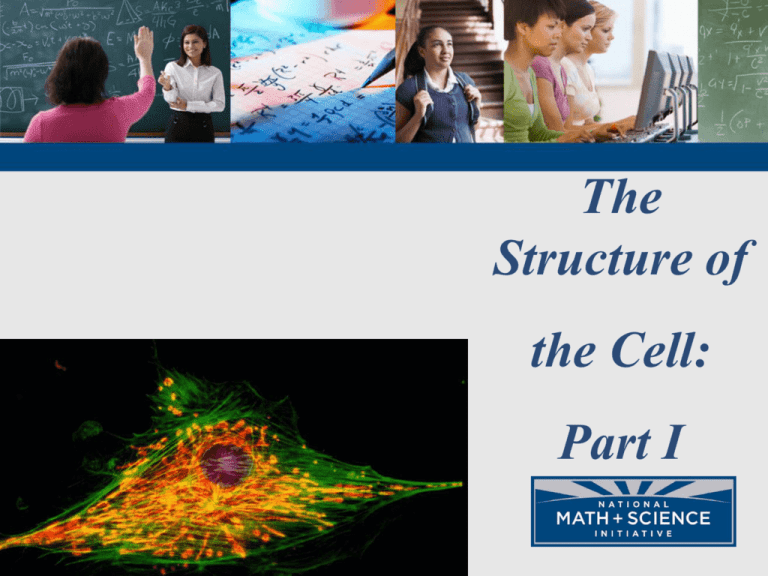
The Structure of the Cell: Part I Cell Theory Cell Theory 1. The cell is the basic unit of life. 2. All living things are composed of cells 3. Cells only come from preexisting cells. 2 Types of Cells • Prokaryotic: Cells without a nucleus or membrane bound organelles • Eukaryotic: Cells with a nucleus and membrane bound organelles (larger more evolved) • Cells are limited in their size 3 Relative Size of Cells The size of a cell is limited by two factors: 1. The surface area increases at a slower rate than the volume for a sphere or cube shape. 2. The larger the cell the longer it takes for materials to diffuse to the center of the cell. 4 Surface Area to Volume Ratio 5 Prokaryotes Prokaryotes were the first cells to evolve. This is an electron micrograph of an actual prokaryotic cell. It has a rod shape. 6 Prokaryote 7 Eukaryotic Animal Cell 8 Eukaryotic Plant Cell 9 Cheek Cells with Different Stains 10 Nucleus 11 Nucleolus The nucleolus is dark staining object in the nucleus. It contains DNA which codes for the production of ribosomal RNA. 12 Nuclear Envelope and E.R. Connection. 13 Smooth ER The smooth ER is continuous with the rough ER. It is different from the rough ER in that it that lacks ribosomes. 14 Golgi Apparatus 15 Electron Micrograph of the Golgi Appratus Functions of the Golgi apparatus 1. Modifying proteins from ER. 2. Manufacturing certain polysaccharides 3. Contributing to the plasma membrane 16 Lysosomes There is flow or connection of organelle membranes in the formation of lysosomes. 17 Vesicles and Vacuoles Vacuoles and vesicles are membrane bound compartments used for storage. Vacuoles are larger than vesicles. Plants use a large central water vacuole to maintain their turgor and structure. 18 Endomembrane or Cytomembrane Sytems 19 Microbodies- Peroxisomes and Glyoxysomes 20 Mitochondiron and ATP Production The mitochondrion is used to phosphorylate ADP to ATP (energy). 21 Mitochondria and Endosymbiosis Mitochondria evolved from ancient prokaryotic cells through endosymbiosis. The evidence includes: 1. Has its own DNA that is circular like prokaryotes 2. Has prokaryotic like ribosomes 3. Replicates like a prokaryote 4. Does protein synthesis like a prokaryote 22





